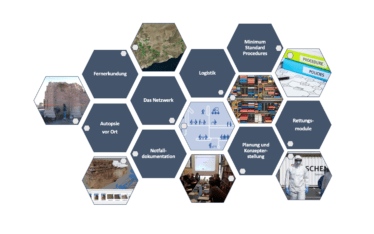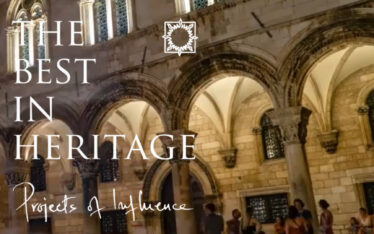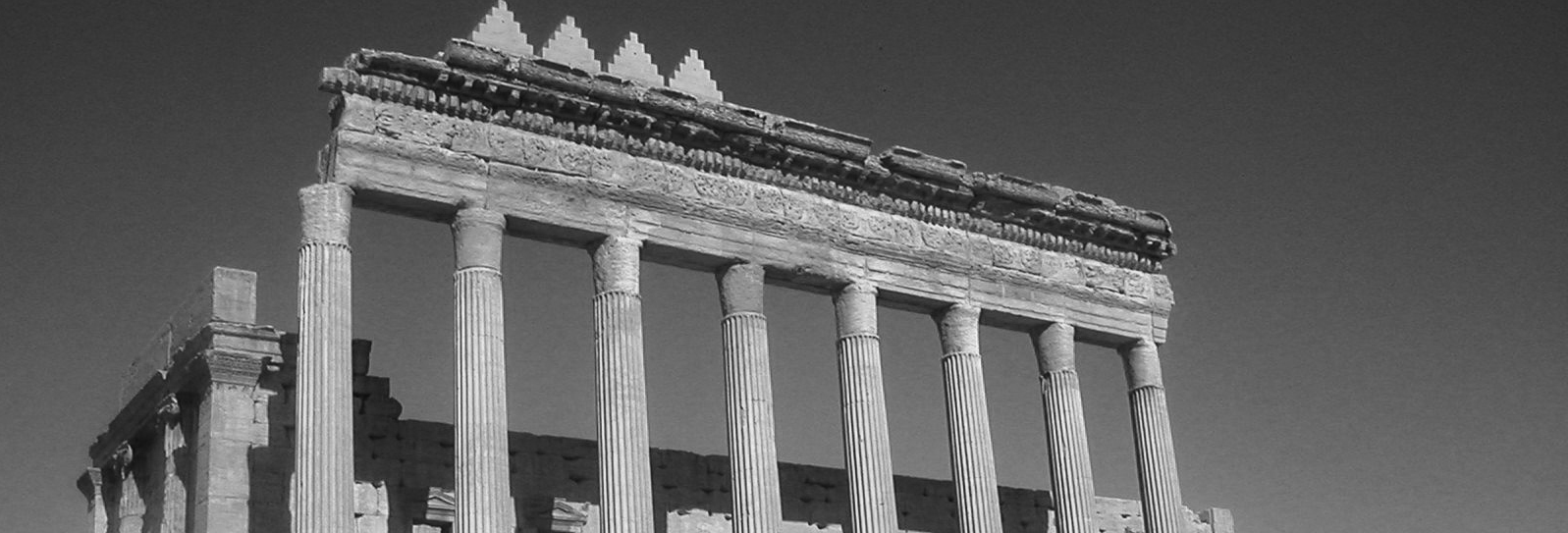
Architectural Conservation – A farsighted study programme
- Home
- Architectural Conservation – A farsighted study programme

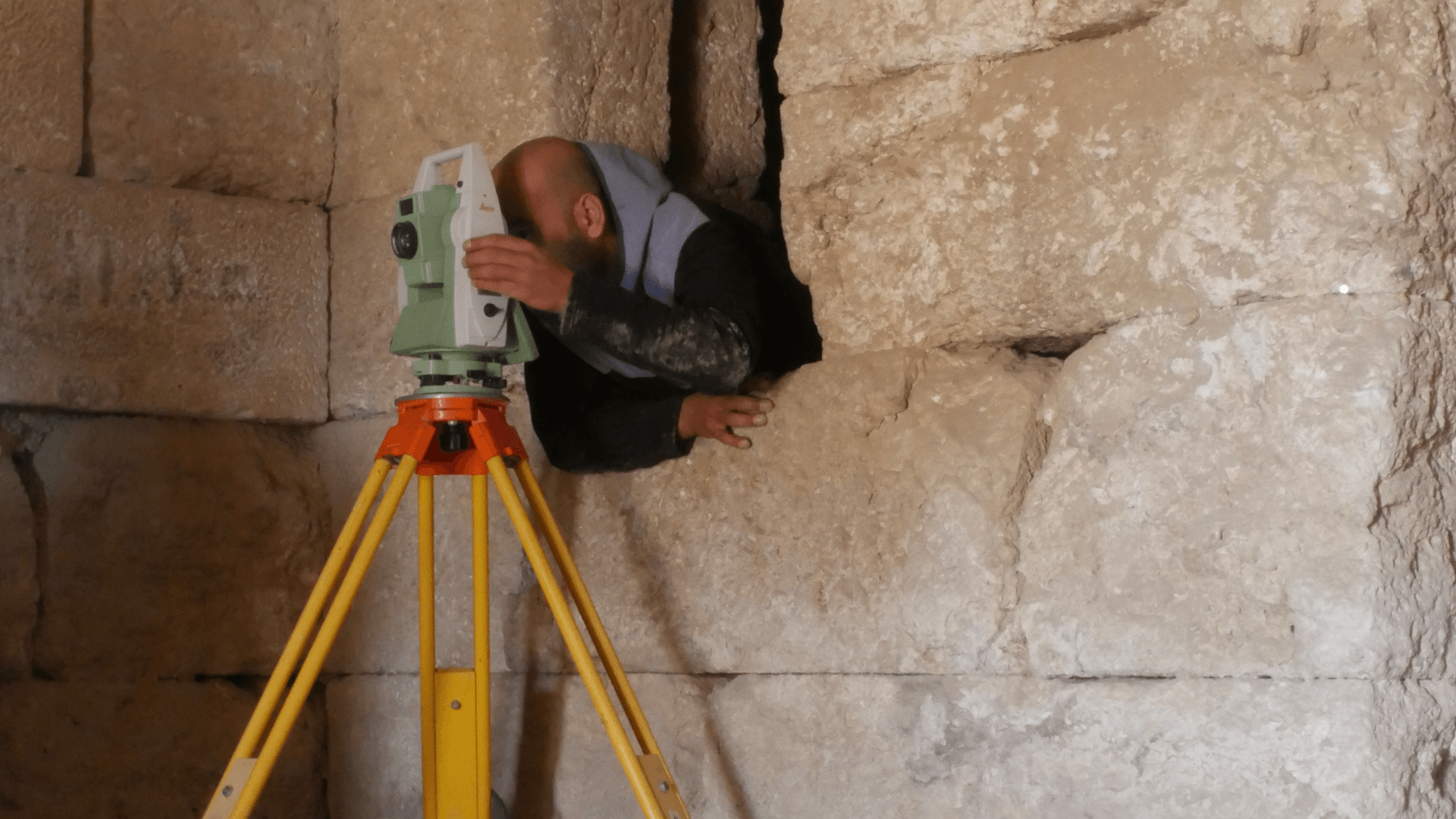
Two years ago the masters programme “Architectural Conservation” was launched at the German Jordanian University by ArcHerNet and the German Academic Exchange Service (DAAD). The study programme provides both Jordanian and refugee students with an academic qualification in the fields of building archaeology, heritage conservation and cultural preservation. We now look back at the initial study semesters of “Architectural Conservation”.
In autumn 2016 the Master’s Programme “Architectural Conservation” was launched at the German Jordanian University (GJU). It was implemented in cooperation with the training research field “Heritage Conservation and Building Archaeology” at the RWTH Aachen University under the supervision of Prof. Dr.-Ing. Christian Raabe, and the research field “Building Archaeology and Heritage Conservation” at the Technical University of Berlin under the supervision of Prof. Dr. Thekla Schulz-Brize. The Archaeological Heritage Network, the German Archaeological Institute and the German Academic Exchange Service initiated the project. The German Federal Foreign Office supports the Master’s Programme as part of the project “Stunde Null – A Future after the Crisis”.

Tachymetric documentation inside the mausoleum | © Winterstein, TU-Berlin.
As early as the second year students from Syria, Iraq, Palestine and Jordan learn the bases of historic building archaeology, heritage conservation and cultural preservation. Education is provided by taking examples of monuments dated to various periods in Jordan according to the standards of German universities. In this way skills are taught which will later be used during reconstruction and during the development of heritage strategies based on detailed building archaeology.

Manual measurements inside the Roman mausoleum, Qasr Nuwejis | © Winterstein, TU-Berlin.
Within the study modules distinct courses are given by lecturers of the RWTH Aachen and the TU Berlin. Engineers Prof. Dr. Thekla Schulz, Dipl. Ing. Claudia Winterstein and Dipl.Ing. Mada Saleh (TU Berlin) provided the students with a course in architectural documentation taught in four compact courses. During the first study semester the students learned about manual building documentation; digital building documentation was the theme of the second semester. The future building archaeologists carried out practical studies in Amman by taking as an example the Roman mausoleum Qasr Nuweiji dated to the 2nd century AD.
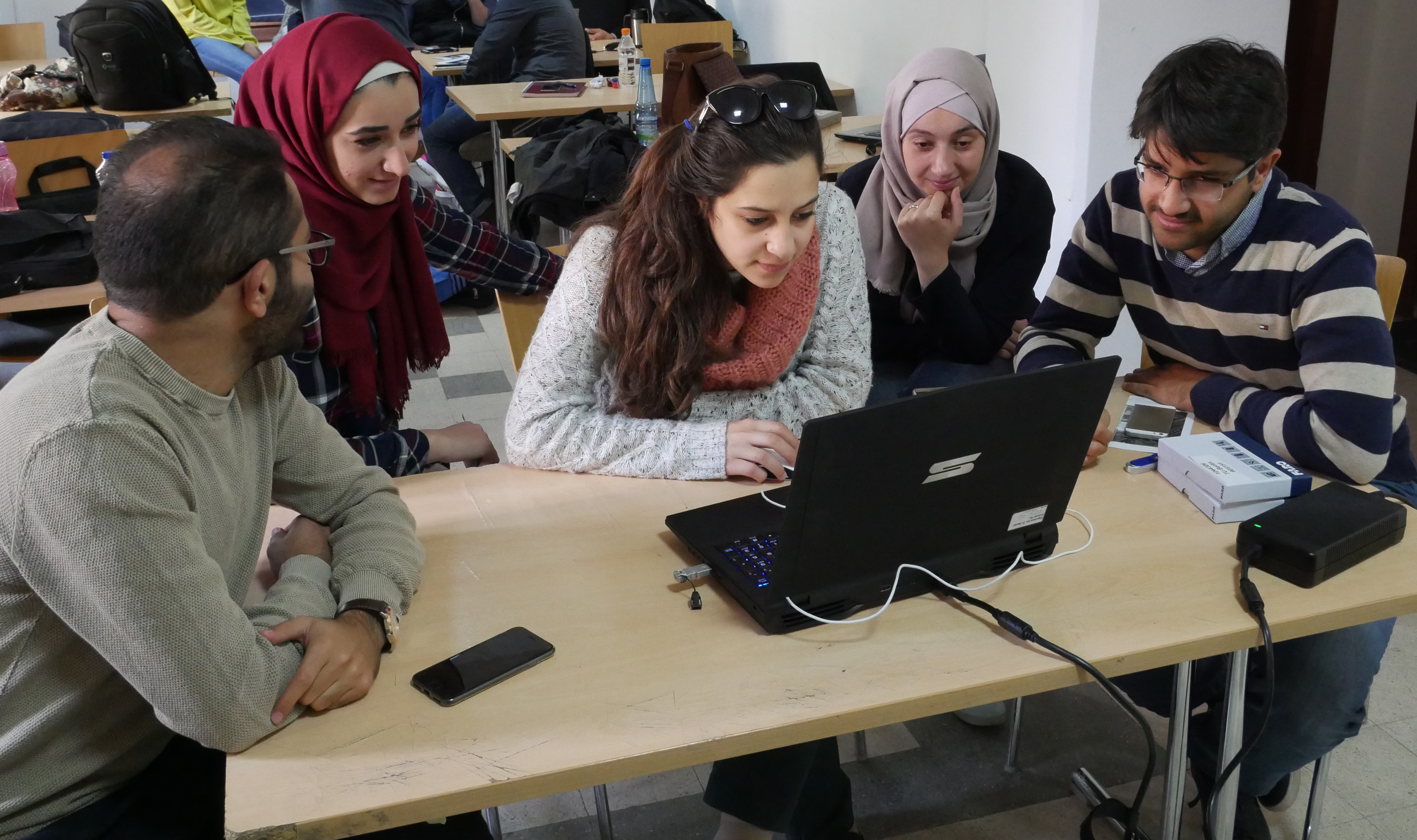
Data analysis at the German Jordanian University in Amman | © Winterstein, TU-Berlin.
In the first course the students learned deformation-true manual measurement, surveying, analytic vision and drawing with the simplest means based on a measurement system independent of the building. In the second course Claudia Winterstein taught the students the basic principles related to tachymetry and photogrammetry. The collected data were CAD-based and processed at computer work places at the German Jordan University. The walls of the mausoleum were recorded photogrammetrically and analysed digitally. A 2D-method was used for the flat facade sections and 3D-photogrammetry (SfM) for the upper protruding entablature sections.
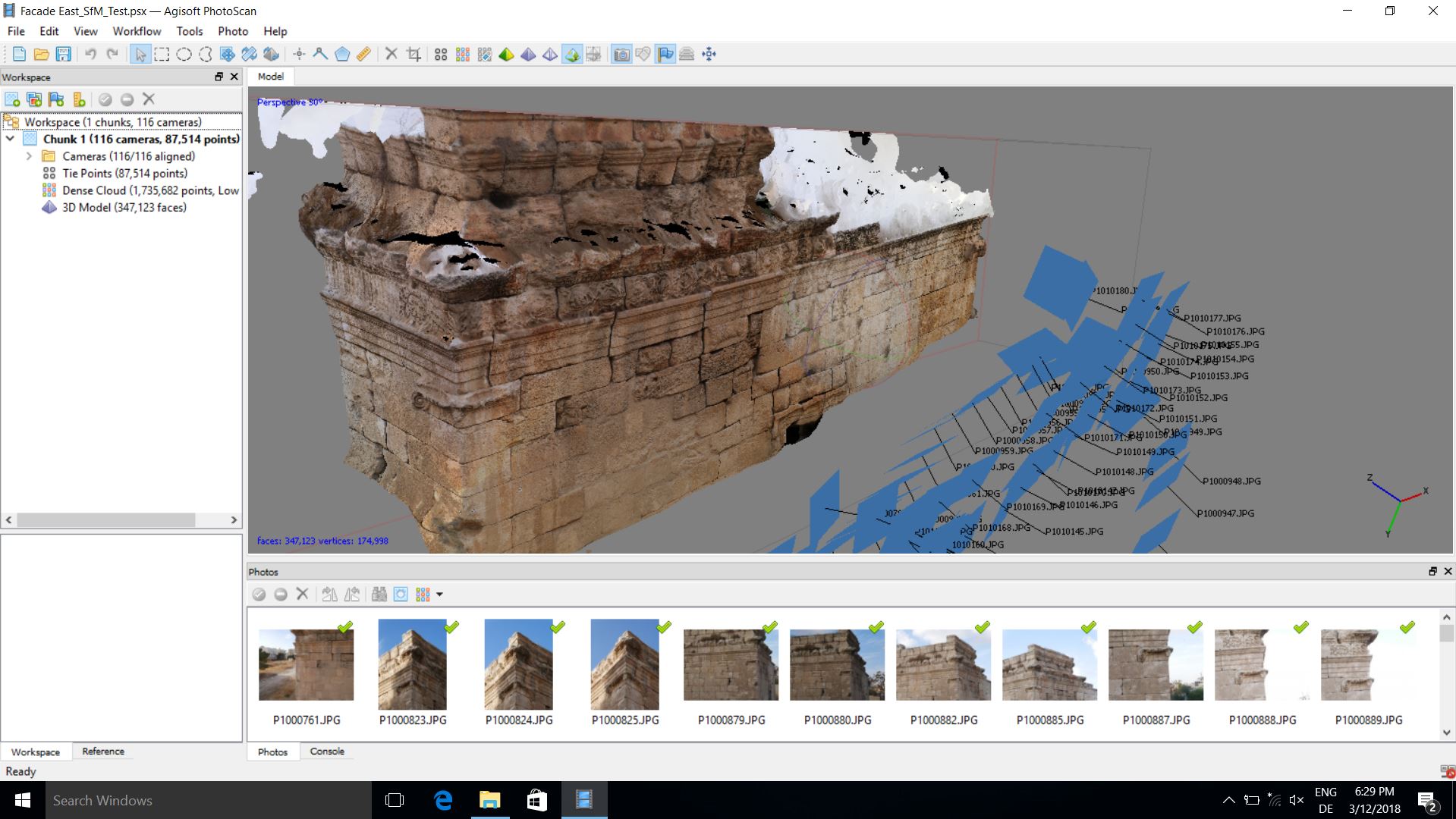
Structure for Motion | © Winterstein, TU-Berlin.
The individual results from these different methods were superimposed and served as a basis for the detailed drawing in situ. For this architectural documentation the students analysed the constructive structure of the tomb. The object of the analysis was its well-preserved pendentive domical vault with the largely protruding keystone the connection faces of which make it possible to suppose an octagonal tent roof. These relationships were analysed on top of the roof of the mausoleum with all participants.

Bauforschung auf dem Gewölbe und Dach des Grabbaus | © Schulz-Brize, TU-Berlin.
The building archaeologist Thekla Schulz-Brize is satisfied with the results of the young academics. All the students showed great commitment and a thirst for knowledge, says Prof. Dr. Schulz-Brize looking back. She was especially impressed by their quickness of mind and their talent.
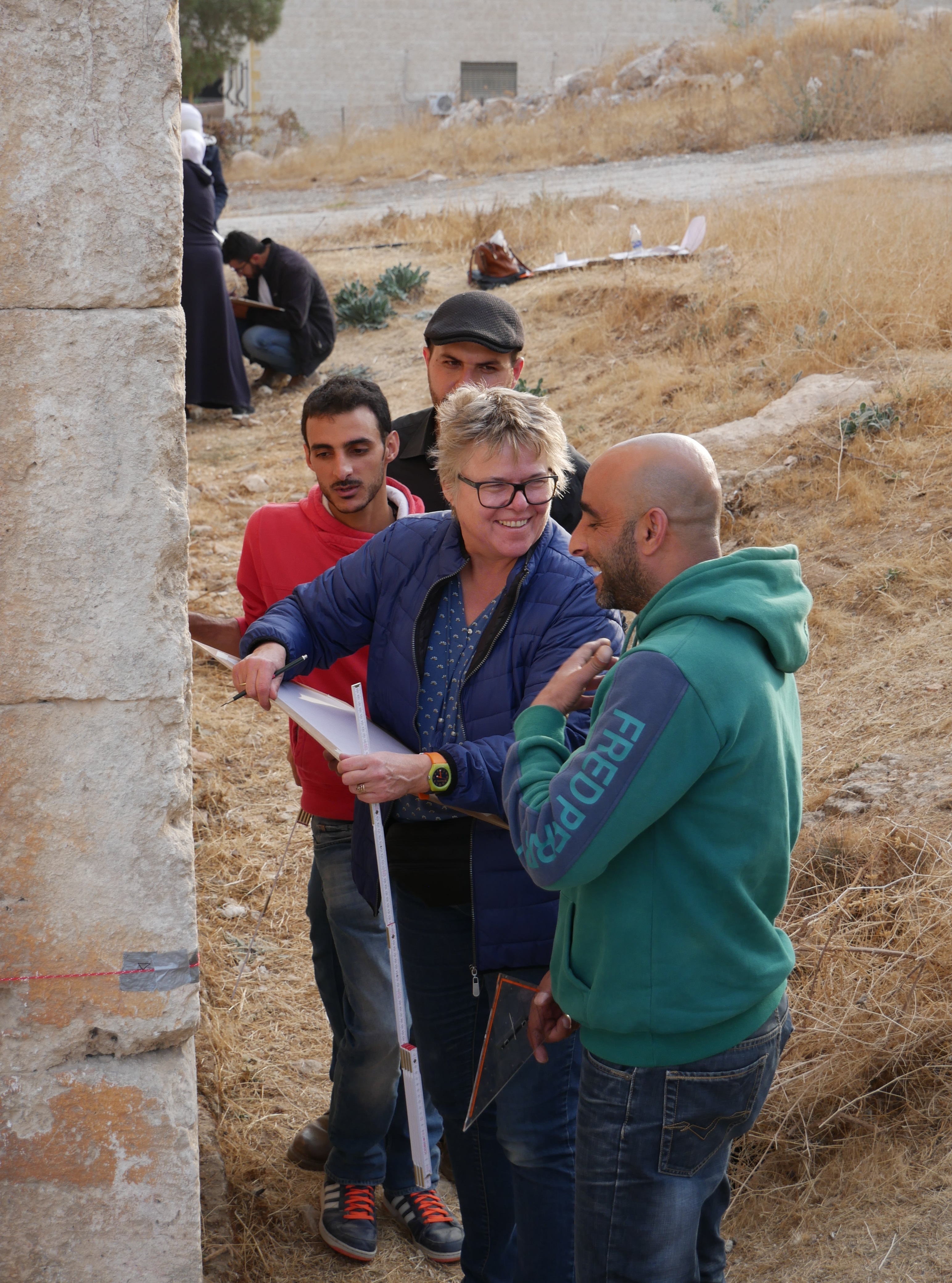
Teaching of manual measurement by Prof. Thekla Schulz-Brize | © Saleh, TU-Berlin.
This particular study programme in Jordan is a successful model, which gives young refugees the chance of a future career. The Master’s Programme “Architectural Conservation” makes it possible for the graduates to take on a responsible position to manage the reconstruction and cultural preservation of their countries in the aftermath of war and crises.
Titelbild: Tachymety im inside the excavation house | © Winterstein, TU-Berlin.
Weiterlesen:
http://www.archernet.org/index.php/2017/03/02/rgk-forscht-mit-keltenwelt-am-glauberg/
Archaeological Heritage Network is made possible by many national and international partners. The Federal Foreign Office and the Gerda Henkel Foundation supports the network.
